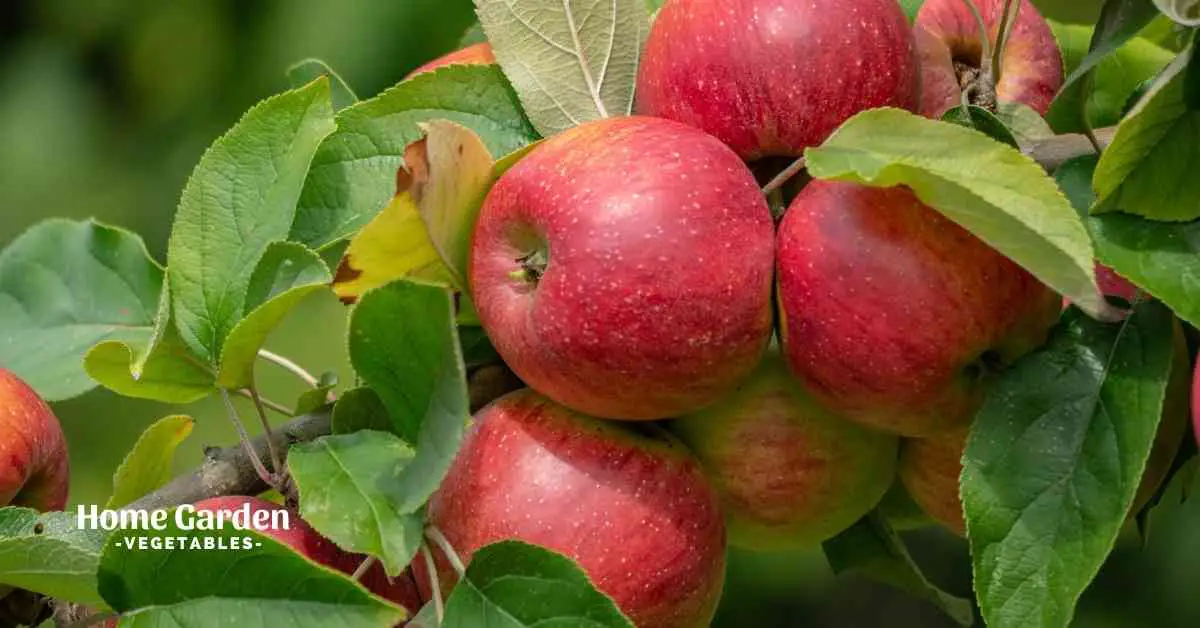Apple is a deciduous tree from the Rosaceae family and is cultivated for its edible fruits. Unfortunately, just like other members of the rose family, apple tree is susceptible to many diseases. On the bright side, diseases can often be prevented with some simple measures. Even if they do appear, damage is often only aesthetic and can easily be diagnosed and treated in time. Continue reading and you’ll learn about the most common apple tree diseases and how to manage them.

Here’s a list of apple tree diseases that you should know about:
Reader Poll: What online courses would interest you?
Apple Scab
Apple scab is caused by the fungus Venturia inaequalis with the initial signs appearing as lesions on the new leaves in spring. From the leaves, the symptoms will gradually spread to other parts of the tree as well. You’ll find black sooty lesions on the leaves, flowers, shoots and fruit. As the disease progresses, the leaves will twist, curl and fall off.
Though the fruit’s aesthetics are affected, they are still edible after you remove the skin. The disease overwinters in the infected trees and plant debris and continues to spread with the advent of spring. Rainy weather offers the ideal condition for the infection to spread.
A combination of treatment techniques are generally used to manage the disease. Plant resistant cultivars, including Crimson Crisp, Gold Rush and Mac-Free and remove plant debris from around the tree at the end of the growing season to control the spread. Organic fungicides to treat apple scab include neem oil, Bordeaux mixtures, copper soap, and sulfur.
Subscribe to our newsletter!
Powdery Mildew
Powdery mildew is a common disease that infects apple trees and is caused by the fungus Podosphaera leucotricha. Apart from apple trees, the disease affects a variety of plants in mild climates. Grey white powder coating on twigs and leaves, and crinkled and curled leaves are some of the distinguishing symptoms for the disease. The fungus overwinters in fallen, infected leaves and is introduced to the healthy leaves by the wind or insects.
Prune out the whitened shoots on the trees and discard them. Clean up the plant debris in autumn, avoid overhead watering and follow the plant spacing recommendations for the variety to allow ample air circulation and prevent the problem. If you’ve experienced powdery mildew in your garden in the past, plant resistant apple varieties, including Liberty and Gold Rush.
Apple Mosaic Virus
Many apple tree varieties, including Golden Delicious, Granny Smith and Jonathan, are susceptible to apple mosaic virus. It appears in early spring as yellow or cream spots on leaves. The spots are small in the beginning and grow larger as the disease progresses. With the arrival of warm summers, the leaves turn brown and fall off.
The yield reduces to about half in the infected trees. Since the disease spreads primarily by root grafting, ensure that you purchase the plant from a reliable source. Unfortunately, there isn’t a treatment plan for the disease. Controlling the spread will require detecting the disease early and removing the infected tree from the garden to prevent the transfer of the pathogen to surrounding plants.
Fire Blight
Fire blight is another one of the most common problems that gardeners have to deal with. Jonathan and Granny Smith varieties are especially susceptible to the disease. If left untreated, it quickly spreads and affects many parts of the tree, severely affecting the yield.
Browning of the leaves and blossoms as the initial signs of the disease. In its advanced stage, the twigs and branches will turn brown to black in color with open cankers. The disease overwinters and spreads to healthy parts of the tree with rain or insects.
Prune out the infected twigs and branches from a few inches below the start of the infection and discard the infected debris. Disinfect the pruning shears to prevent the spread of the disease. Treat the tree with Bordeaux mixture or organic copper-based fungicides to control the disease.
Cork Spot
Cork spot is a physiological disorder in apple trees that diminishes the quality and the aesthetic appeal of apples. It appears as tiny green spots on the outer surface of the fruit. The green spots enlarge into corky, brown depressions as the disease progresses. Though it appears as damage caused by hail or insects, it’s actually a result of low soil pH and associated calcium deficiency. York Imperial, Golden Delicious and Delicious are especially susceptible to the problem, particularly when growing in poor soil conditions.
Before treating the problem, it’s important to conduct a soil test to learn the pH. If the soil pH is lower than 6.0, you may have to add lime to the soil to raise the pH to neutral. Furthermore, a foliar spray of calcium chloride solution on the infected trees can help control the disease.
Rust Diseases
Apple trees are prone to multiple rust diseases. Cedar apple rust is the most common among rust diseases and attacks the apples if they are planted near certain varieties of red cedar or juniper. It appears as yellow-orange stains on leaves and other parts of the disease.
Cedar-Quince is another rust disease that affects apple trees and is caused by the fungus Gymnosporangium clavipes. The fungus needs a host plant nearby to attack your apple tree. If you’re growing flowering quince shrubs around your apple tree, the chances of infection are high. Management of the disease involves removal of these host plants so the fungal spores are less likely to spread to your apples.
Conclusion
Now that you know all the common diseases associated with apple trees, take all the measures to prevent them from occurring. Even if they do appear, early diagnosis and suitable treatment can save the yield from heavy losses.

